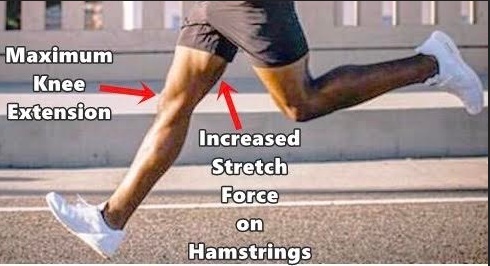The extent to which heel strike running is a major risk factor for hamstring injury is that while the foot lands squarely on the heel, the knee fully unbends which directly causes the hamstrings to stretch to become too strained with tension. What’s worse, this happens under high-impact conditions due to the heavy compressive wave caused by landing with a fully extended leg, which also results in a longer displacement between initial foot strike position and the mass of the body. The net consequence of this is more compressive loads is transmitted to the hamstrings while the hammies are locked in a hyper-stretched state at touchdown. In contrast, hamstring injury is less likely in forefoot running since a smaller over-stride angle results at touchdown which prevents the hamstrings from stretching beyond their maximum tolerable limit. Read more here! 
Is Heel Strike Running Bad for the Hamstings?

